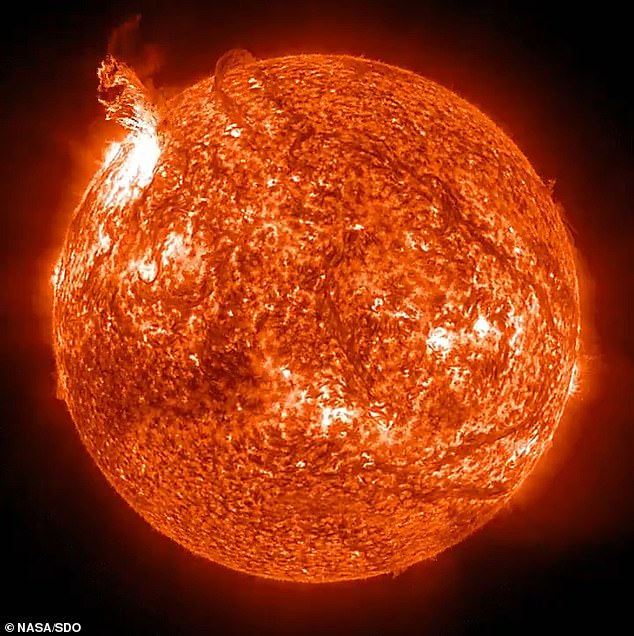
NASA Alerts: Major Solar Storm Triggers Global Power Outages
Massive Solar Storm Threatens Global Systems, Offers Northern Lights Spectacle
A powerful X2.7-class solar flare erupted from the sun on May 14, sparking warnings from NASA about potential disruptions to communications, power grids, and GPS systems worldwide. The flare, originating from the sun’s most active region, is now rotating toward Earth, heightening concerns as solar activity intensifies.
Immediate Impacts
The blast of radiation triggered radio blackouts across Europe, Asia, and the Middle East, while parts of the eastern U.S. experienced power grid fluctuations. NASA cautioned that further disturbances could affect aviation, maritime operations, and even spacecraft. Space weather expert Vincent Ledvina noted the solar region’s growing threat as it aligns with Earth, stating, “This is getting intense.”

NASA’s image of the X2.7 flare, captured in extreme ultraviolet light (colored red to highlight heat).
Aurora Alert
Amid the chaos, skywatchers in 11 U.S. states—including Alaska, Michigan, and Maine—may witness dazzling northern lights. New York and neighboring regions could also catch glimpses of the auroras, a silver lining to the solar turmoil.
Solar Flare Classification
Solar flares rank from A (weakest) to X (strongest), with each tier ten times more potent than the last. The recent X-class flare underscores the sun’s current hyperactive phase. The UK Met Office reported up to five sunspot regions facing Earth, with moderate flares possible in the coming days.
Geomagnetic Storm Risks
While not yet confirmed, the flare may have unleashed a coronal mass ejection (CME)—a massive plasma burst that, if Earth-directed, can trigger geomagnetic storms. These storms disrupt magnetic fields, potentially causing widespread blackouts, as seen during Quebec’s 1989 nine-hour outage.

An active solar region (left) and a coronal mass ejection (right), which can spark geomagnetic storms and auroras.
Why Monitoring Matters
As technology reliance grows, so does vulnerability to space weather. Solar flares and CMEs can cripple satellites, GPS, and power infrastructure. Agencies like NASA and the Met Office emphasize vigilance during the sun’s active cycles, which peak roughly every 11 years.
For now, Earth may dodge the worst impacts, as the flare’s source—AR4087—remains near the sun’s edge. However, the sun’s increasing activity signals more storms—and auroras—could loom ahead.
Stay tuned for updates as scientists track this celestial phenomenon.
Key Takeaways:
- X2.7 flare caused global radio disruptions and U.S. power fluctuations.
- Northern lights expected across northern U.S. states.
- Geomagnetic storms pose risks to infrastructure; 1989 Quebec outage serves as a cautionary example.
- Ongoing solar activity warrants close monitoring in coming weeks.
Images: NASA/NOAA/SWPC


